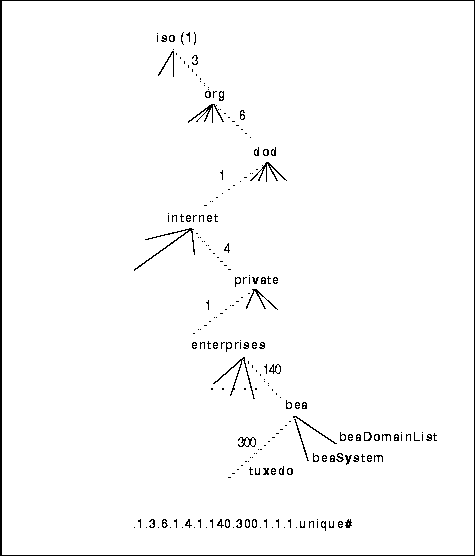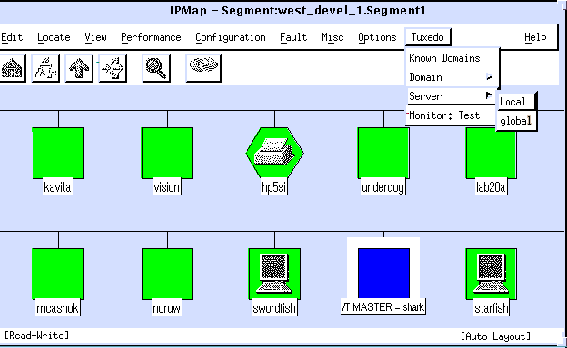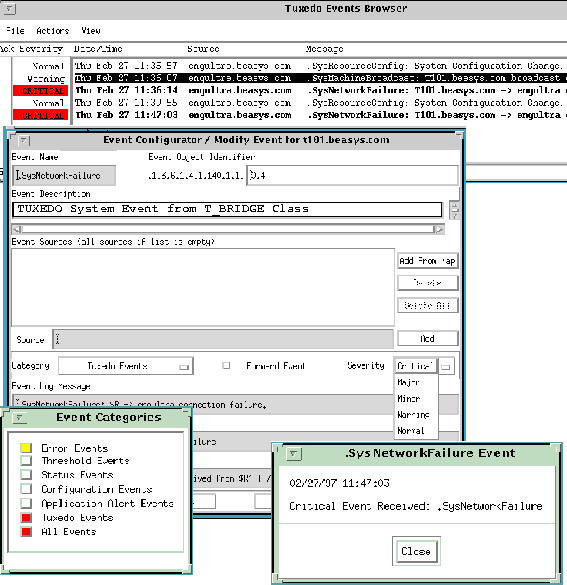SNMP Overview
The Simple Network Management Protocol (SNMP) provides a standard system for classifying system information about hardware, software, and other aspects of a distributed client/server system. The basic SNMP standard for system management is defined in the Network Working Group (NWG) RFC 1157.
SNMP network and systems management is based on the manager/agent model described in the network management standards defined by the International Organization for Standardization (ISO). In this model, a network manager exchanges monitoring and control information about network and system resources with distributed software processes called agents.
Any system or network resource that is manageable through this exchange of information is a managed resource. This could be a software resource, such as a message queue or TUXEDO application, or a hardware resource such as a router or NFS file server.
Agents function as "collection devices" that typically gather and send data about the managed resource in response to a request from a manager. In addition, agents often have the ability to issue unsolicited reports to managers when they detect certain predefined thresholds or events on a managed resource. In SNMP terminology, these unsolicited event reports are called trap notifications.
A manager relies upon a database of definitions and information about the properties of managed resources and the services the agents support - this comprises the Management Information Base (MIB). When new agents are added to extend the management domain of a manager, the manager must be provided with a new MIB component that defines the manageable features of the resources managed through that agent.
The manageable features of resources, as defined in an SNMP-compliant MIB, are called managed objects (also termed management variables or variables). Examples of managed objects include the state of a TUXEDO domain, the number of users currently logged on to a system, the number of physical network interfaces on a router, or a global static variable in an application. When the heterogeneous components of an enterprise's distributed systems are defined within a common MIB on the management station, this provides a unified perspective and single access point for managing system and network resources.
The data types and the representations of resources within a MIB, as well as the structure of a particular MIB, are defined in a standard called the Structure of Management Information (SMI). This standard is described in the NWG RFC 1155.
A formal language, known as the ISO Abstract Syntax Notation One (ASN.1), is used to describe MIB data independently of any encoding technique used. SNMP uses a subset of the ASN.1 language to represent a MIB.
As illustrated in Figure 1-1, under the SNMP paradigm, there is a management platform that provides operators access to management information from a management console. At the management console, the systems administrator issues management commands to SNMP agents to collect the values of various management variables which are defined in that platform's Management Information Base. The SNMP protocol is based on asynchronous request/response commands. A management station sends a GET or GET-NEXT command to request values of MIB variables from an agent, or a SET request to modify the value of a variable. Once the data is collected, management platforms can present views or graphs of the information or take action in response to the information provided by SNMP agents.
Figure 1-1 SNMP Management and SNMP Agent Interaction

Typically, management platforms save the collected data to a repository for historical reporting. They also commonly include various tools and utilities to analyze the management data. The management framework enables the network administrator to automate responses to event-based operations, change access privileges, update application information, and tune application parameters.
The Agent Connection provides several key features for TUXEDO and M3 applications management:


